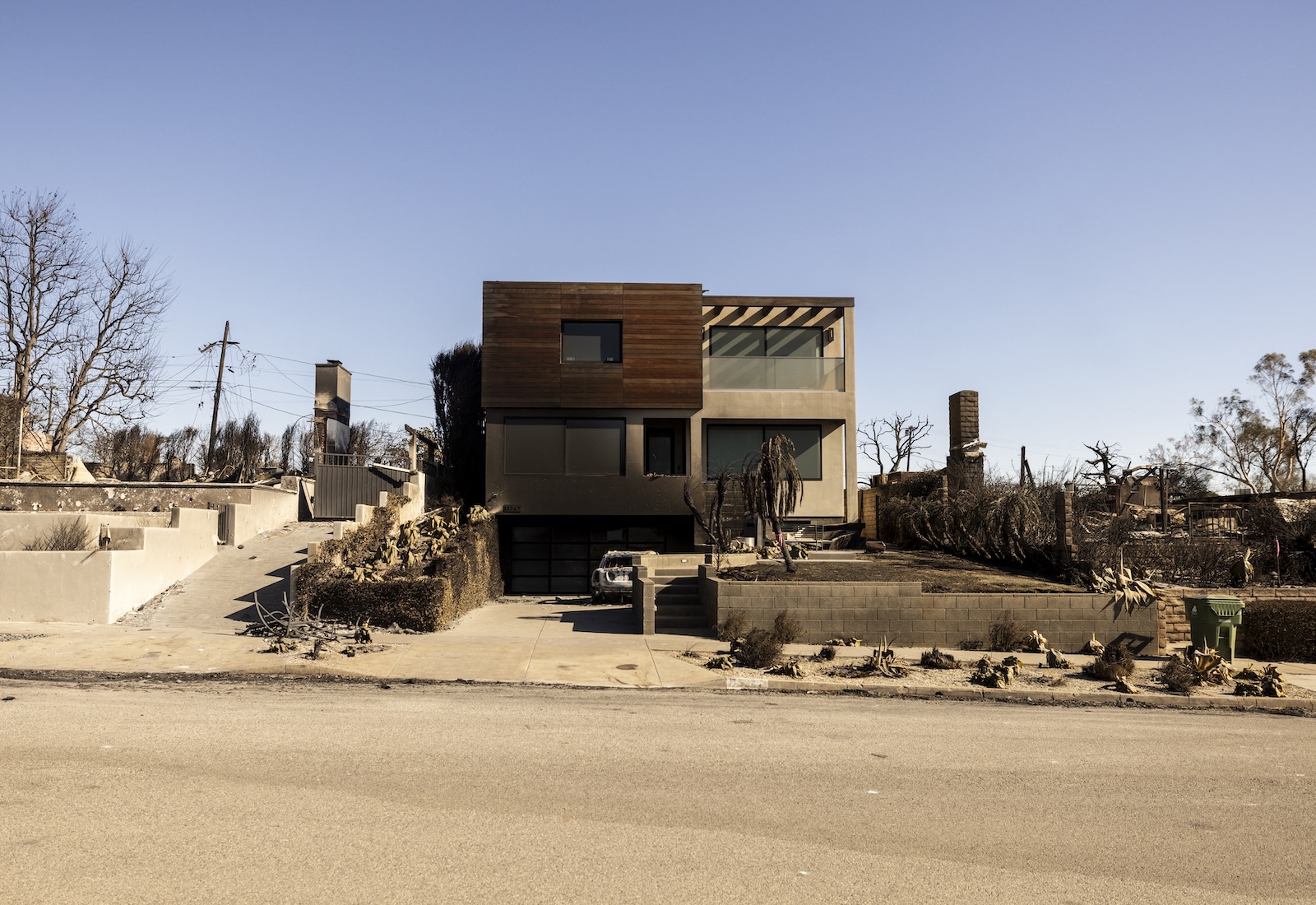In 2023, Seattle voters authorized the city to create a new organization to develop “social housing,” a type of publicly-owned affordable housing that accommodates low- and middle-income renters. Now, as residents prepare to vote on another ballot initiative on whether and how to fund the developer, local advocacy organizations are pitching social housing as a climate solution.
“If we’re thinking long-term, this is a transformative solution,” said Akiksha Chatterji, campaigns director for the local nonprofit 350 Seattle.
Chatterji’s group, which advocates for climate and social justice as part of an equitable transition away from fossil fuels, has made social housing a core part of its advocacy platform since the proposal’s early days. It has recently rallied supporters around the ballot initiative to fund it through a new tax on wealthy corporations, which voters will consider on Tuesday. Sunrise Seattle, a branch of the national youth climate organization Sunrise Movement, has also endorsed the social housing initiative.
Seattle already has a few public housing developers, as well as programs that require new developments to include a minimum number of affordable units, provide assistance to first-time homebuyers below a certain income, and grant tax exemptions in exchange for the creation of low-rent apartments. But the city still faces a housing crunch, with the broader region expected to fall 140,000 units short of the 640,000 new homes needed to meet projected demand by 2044.
The broad goal of social housing is to equitably alleviate that housing crunch by creating apartments and townhouses that aren’t subject to market speculation. Under the new developer’s model, units would be publicly owned and would remain affordable indefinitely. Other forms of affordable housing developed by nonprofits are often built with expiring federal tax credits and revert to market rates after a period of 15 to 30 years.
If climate activists get their way on Tuesday, the Seattle Social Housing Developer — the organization that voters established in 2023 — will serve people across a wide income range: from those making 60 percent of the area median income to those making 120 percent of it. (The Seattle area’s median household income is about $106,000, so the social housing would be available to those making around $64,000 to $127,000 a year.) House Our Neighbors, the advocacy group that spearheaded the campaign to create the social housing developer, says this will create “cross-class communities” and also make it easier to fund building construction and maintenance.
Similar social housing experiments have proven successful in a handful of other places — most famously, Montgomery County, Maryland, and Vienna, Austria.
There are two broad reasons why Seattle advocates are describing their social housing model as climate-friendly. The more straightforward one is that the Seattle Social Housing Developer is required to build all new construction in line with “passive house” standards for energy efficiency. These standards involve high-quality insulation, air-tight seals, and other strategies to keep heat, cold, and moisture from entering (or exiting) buildings.

Joe Klamar / AFP via Getty Images
Michael Eliason, founder and principal of the architecture firm Larch Lab, said these requirements can save a significant amount of energy on heating and cooling — which means fewer emissions from burning fossil fuels. This is the case even though Seattle has fairly strict energy codes for all newly constructed buildings. Some of the city’s recently built passive house buildings use 30 to 35 percent less energy than affordable housing built to standard code requirements.
Passive house construction is also better adapted to climate disasters like wildfire, thanks to powerful air filtration systems that help keep embers outside. In one Los Angeles neighborhood that was recently razed by the Palisades Fire, the only house that remained standing was one built to passive house standards. And for those living downwind of wildfires, airtight ventilation keeps smoke from entering buildings, meaning less exposure to hazardous particulate matter.
The other climate argument for social housing is less obvious, and applies to many forms of affordable housing. Adding more housing to desirable urban areas allows more people to live near workplaces, schools, grocery stores, and other amenities, reducing car dependency and the greenhouse gas emissions associated with it. According to one estimate, doubling urban density — the amount of people and development in a given square mile — could reduce travel-related CO2 emissions by 35 percent, and household energy-related emissions by about half. (This is largely because apartment buildings are typically more energy efficient than single-family homes.)
Some of Seattle’s existing public housing developers, like Community Roots Housing, are already working to equitably increase density, and in some cases are exceeding the city’s baseline energy code requirements. Mason Cavell, Community Roots’ director of real estate development, said it wasn’t clear what “additional tools or benefits” the Seattle Social Housing Developer would have at its disposal to “surpass what the existing industry is able to do” on these fronts.
Proponents say that the answer depends on how the developer gets funded. On Seattle’s upcoming ballot, voters will be asked whether the Seattle Social Housing Developer should be funded at all. A second question asks voters to opt between two potential sources of funding.
Proposition 1A would create a new excess compensation payroll tax that social and environmental justice advocates are backing. The tax would apply to companies that pay their executives more than $1 million a year, and supporters of the plan expect it to generate more than $50 million annually to create 2,000 new units over 10 years.
Having that revenue stream, said Julie Howe, a housing researcher at the University of Washington, would allow the Seattle Social Housing Developer to take on projects that aren’t as attractive to other affordable housing developers. More money could mean housing in smaller niches closer to existing transit infrastructure, instead of cheaper sites that are more remote.
Proposition 1B would leverage funding from an existing tax on large companies, which is already shared by the city’s other affordable housing programs.
Al Levine, former deputy executive director of the Seattle Housing Authority, prefers 1B because it reflects an approach to housing that has had more time to prove its financial viability. He also questioned whether the pros of passive house construction outweigh the cons. “Obviously a passive house is a better building in the long run,” he said, but he thinks it could raise the cost of building by 10 to 30 percent. “In making it work, what are the tradeoffs?” he added. “If you spend more up front, you have to recoup that in rent.”

Etienne Laurent / AFP via Getty Images
House Our Neighbors, 350 Seattle, and other advocacy groups oppose the 1B funding mechanism because it would lower the income cap on social housing residents to just 80 percent of median area, fundamentally changing the program and making less funding available. It “essentially forces social housing back into the same low-income system that the affordable developers are operating in,” Howe said. “It doesn’t give us the ability to be nimble and flexible.”
Chatterji said the climate justice vision of social housing is bigger than just emissions reductions from lower energy use and easier access to transit. A new tax on big businesses would boost equity, she said, by making healthy and eco-friendly building features available to everyday people.
“You see a lot of rich people making their houses super fireproof, or all of these amenities only being available to people who can afford it,” she said. “Passive house and social housing challenges that by saying, ‘No, these are all public goods, and they should be available to the public in perpetuity.’”
Plus, she added, high-quality construction enabled by the revenue from mixed-income tenants and the 1A tax could mean longer-lasting housing that won’t need to be frequently renovated or replaced.
Tiffani McCoy, House Our Neighbors’ co-executive director, said social housing should be paired with other urban policies like increased transit and zoning reform to unlock further emissions reductions and make Seattle more equitable. Washington state recently banned single-family zoning statewide, though some of Seattle’s richest neighborhoods are exempted from the prohibition.
Seattle’s social housing advocates say that the decisions their city makes now could influence other urban areas contending with problems around housing, affordability, and climate resilience. In New York City, which faces a particularly dire housing crunch, recent zoning reforms are expected to enable the creation of 82,000 more homes over the next 15 years. California has also passed reforms allowing homeowners to divide their property into two lots, creating opportunities for new housing. Yet the country still has an affordable housing gap of about 7.3 million units, according to the National Low Income Housing Coalition.
McCoy said that funding affordable housing with a progressive revenue source, as proposed by Proposition 1A, could insulate cities from the vagaries of the federal government. As President Donald Trump attempts to slash spending on climate mitigation and social programs, she said it’s “even more prudent and incumbent for people at the local level to act now … to make sure that we’re still providing social services, environmental protections, and environmental programs.”
Editor’s note: The author of this article was an intern at 350 Seattle in 2021. He was not involved in the organization’s housing campaigns.
This story was originally published by Grist with the headline In Seattle, advocacy groups pitch ‘social housing’ as a climate solution on Feb 7, 2025.
Mixed-income affordable housing can cut emissions and boost equity, they argue. Cities, Housing Grist








